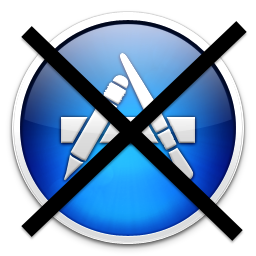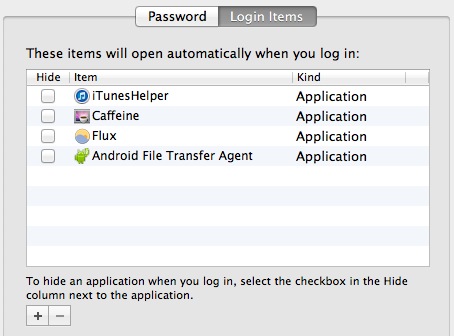4 Simple Performance Tricks to Speed Up Any Mac

All modern Macs are pretty fast these days, but sometimes we all need a performance boost to get things done as efficiently as possible. That’s what these simple tricks are aimed at, they will help you speed up any Mac and get the absolute best performance out of the Mac OS X machine by having a simple focus on resource utilization.
These are simple performance tips that will help to achieve maximum speed by insuring there is plenty of system memory and processor available, along with low disk utilization, so that nothing will be bogging down Mac OS X while you attempt to perform another task.
Simple Mac Performance Tricks
OK let’s dig in with and enhance the performance of a Mac. Some of these are also good habits to become accustomed to, so if you notice one particular tip is offering a very big performance boost then consider integrating that into your usage routine as needed.
1: Quit All Unnecessary Apps & Free Up Resources
Any open application takes up system resources, and in best scenarios that’ll just be some RAM, but it’s not unusual for background apps or processes to be using CPU and even causing disk activity as well. Thus, quitting all unnecessary apps is a given whenever you need the absolute best performance out of a Mac.

You can be selective and only quit some apps, or quit everything by using this Automator app to clear the slate. Don’t be overly concerned about doing this, so long as you have Window Restore (the default behavior of OS X) enabled, when you launch that app again everything will return to where it was.
2: Temporarily Delay Backups & Time Machine
Backups are a very good thing, and Time Machine is something that every Mac user should use to keep automatic backups of their Macs. But it can slow things down while it’s running, because Time Machine consumes both processor and disk as it runs, which copies files to the backup drive. The solution is simple, just delay Time Machine while you’re at your busiest and when you need maximum performance out of the Mac. You can do this by pulling down the Time Machine menu and stopping it yourself when it starts to run and you need maximum performance.

This trick is especially valuable for users of apps like Photoshop, Aperture, Final Cut, basically anything that uses a ton of swap, since you don’t want another task competing for disk read/write access.
Because Time Machine runs on a schedule it’s often easier to just adjust the backup interval yourself to a time that works better for your needs. This is a bit more advanced and requires the usage of the Terminal, but you can adjust the backup frequency with a defaults write command entered through the terminal. The following will change the backup interval to occur every 4 hours (14400 is the number of seconds in 4 hours):
sudo defaults write /System/Library/LaunchDaemons/com.apple.backupd-auto\
StartInterval -int 14400
4 hours is reasonable since very few people can maintain maximum productivity for longer than that anyway, meaning you can stop a backup and it will resume itself in another 4 hours. Toggle the interval to your needs, but it is not recommended to go beyond 12 hours.
Time Machine isn’t the only culprit though, and many cloud backup services like CrashPlan can slow things down even more while they’re running because they rely on Java, which means not only is your disk IO going to spike, but so will CPU use. Postpone those cloud backups too if you’re in a crunch and need maximum performance.
Just remember to start or resume backups yourself when maximizing performance is no longer a concern, as you never want to be without system backups for too long.
3: Speed Up Boot Time & Restarts with Fewer Login Items
Though shutting down and rebooting Macs is rarely necessary these days, it still needs to happen from time to time whether a computer is being transported or an update is being installed. To speed up boot time and restarts, simply remove unnecessary items from the login and startup folders.
Checking Login Items is easy:
- Open System Preferences and go to “Users & Groups” followed by the “Login Items” tab
- Select and remove anything not essential during system login

Small helper apps like Flux and Caffeine won’t add to boot time, but unneeded auto-mounted network drives and larger applications can add a significant delay to boot times.
It’s also worth browsing the StartupItems folder, found at the following location:
/Library/StartupItems/
Look for anything unnecessary in that directory for apps you no longer use or don’t have installed. Just be aware that moving things out of StartupItems can result in some apps no longer working, making this best left alone if you’re uncertain.
4: Reduce Browser Tabs & Windows
Web browser tabs and windows are easily some of the most RAM hungry tasks that exist almost universally in everyones daily activities, and the more tabs you have open the more RAM gets used. Furthermore, some websites with active Flash plugins or AJAX scripts can send CPU usage through the roof as well, further slowing down a Mac. The solution here is pretty simple, just keep your browser tab and active window use down.

Of course that is always easier said than done, and for those who depend on many browser tabs for work or research, OneTab for Google Chrome offers an excellent solution by combining all active tabs into a single page with links to the pages. This frees up huge amounts of memory and has become a personal favorite, it’s free and simple to use.
–
Remember these performance tricks are aimed at quickly maximizing available resources, and that if a Mac is suddenly feeling sluggish, there may be a reason why it’s running slow, whether that’s software updates installing, Spotlight indexing, or a number of other potential causes.

